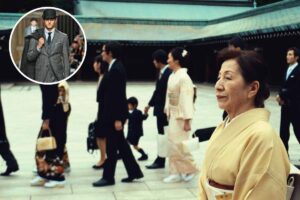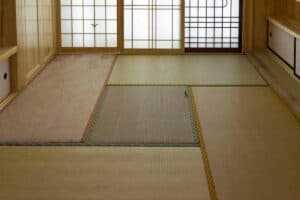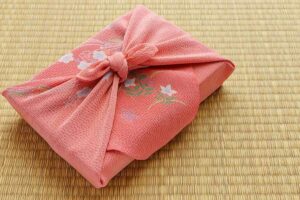If you’re traveling to Japan, it’s important to know the chopstick etiquette that applies in that country.
Here are some tips on what to do, and not do, when using chopsticks.
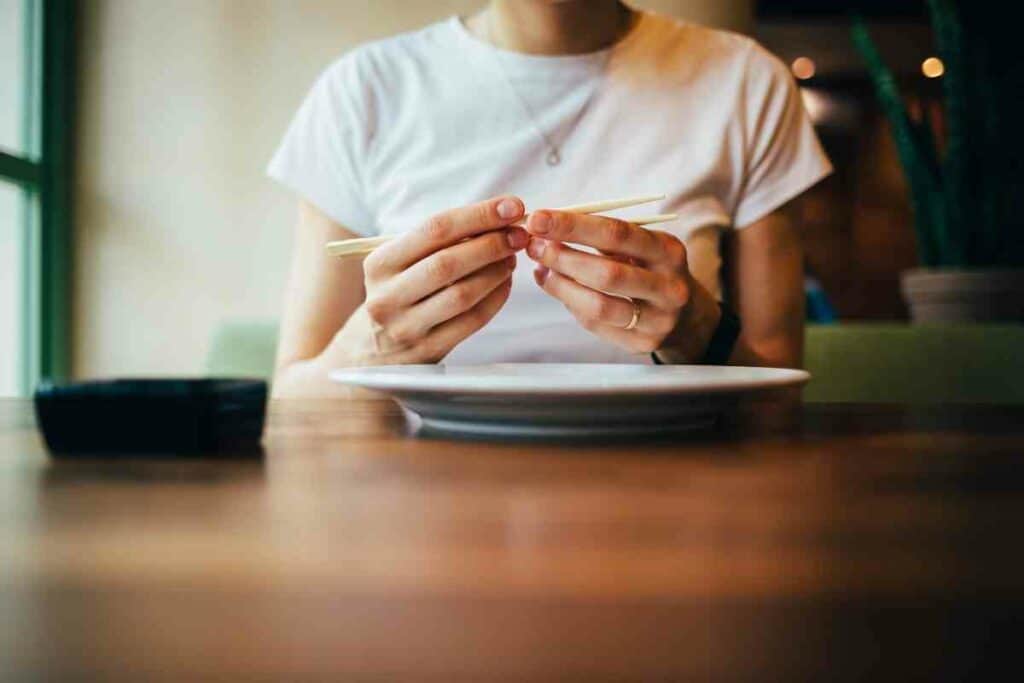
These dos and don’ts of chopstick etiquette were designed to uphold the Japanese values of cleanliness, order, and tradition.
What to Expect? By taking care to follow these dos and don’ts, you’ll earn the respect of your host, and avoid bringing bad luck and bad omens to those around you.
Table of Contents
The Dos
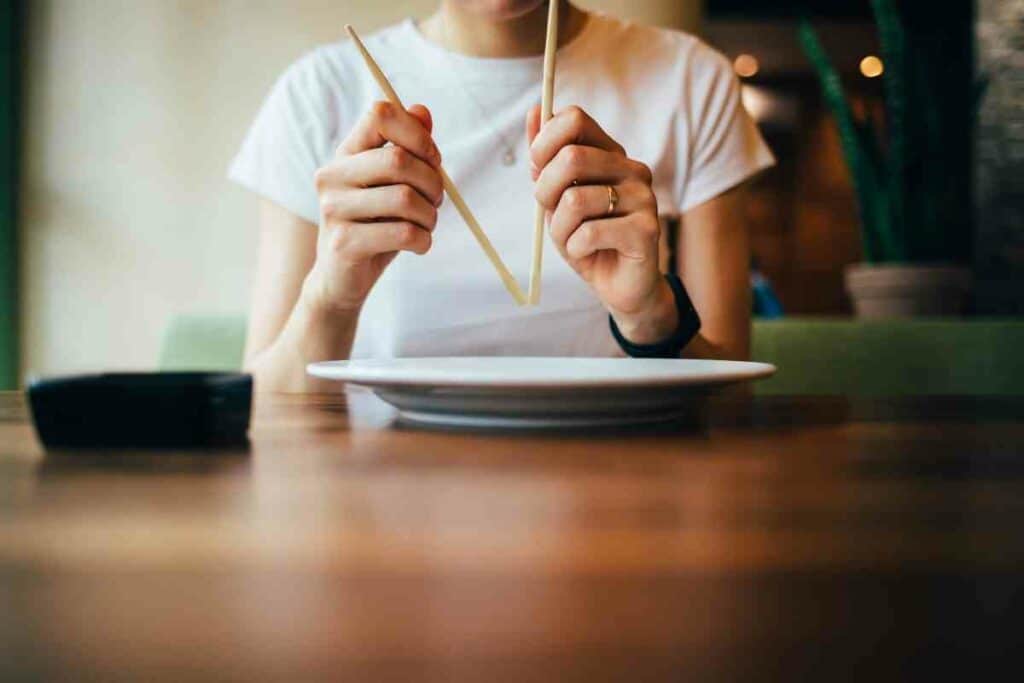
There are two main dos when it comes to using chopsticks.
The two dos are using proper form and placing them in the right spot when you set your chopsticks down.
Proper Form
Children in Japan are taught at a very young age how to properly hold chopsticks.
The proper way to learn how to hold chopsticks is to demonstrate and assist when the learner is struggling.
Since we can’t reach through the screen to show you the correct form when holding chopsticks, this video will demonstrate the position your hand should be in, how to place each chopstick, and how to operate both chopsticks at the same time.
While you’re practicing, remember that this utensil is something you aren’t used to, and it will take time to master until you can pick up foods like peas or grains of rice.
The biggest tip for using chopsticks is the first chopstick placed doesn’t move and stays stationary while the other chopstick does all the moving to grab food.
Where to Set Your Chopsticks Down
There are only two acceptable places to rest your chopsticks.
If a chopstick rest has been provided, place just the very tips of your chopsticks on it, with the wider end of the chopstick resting on the table.
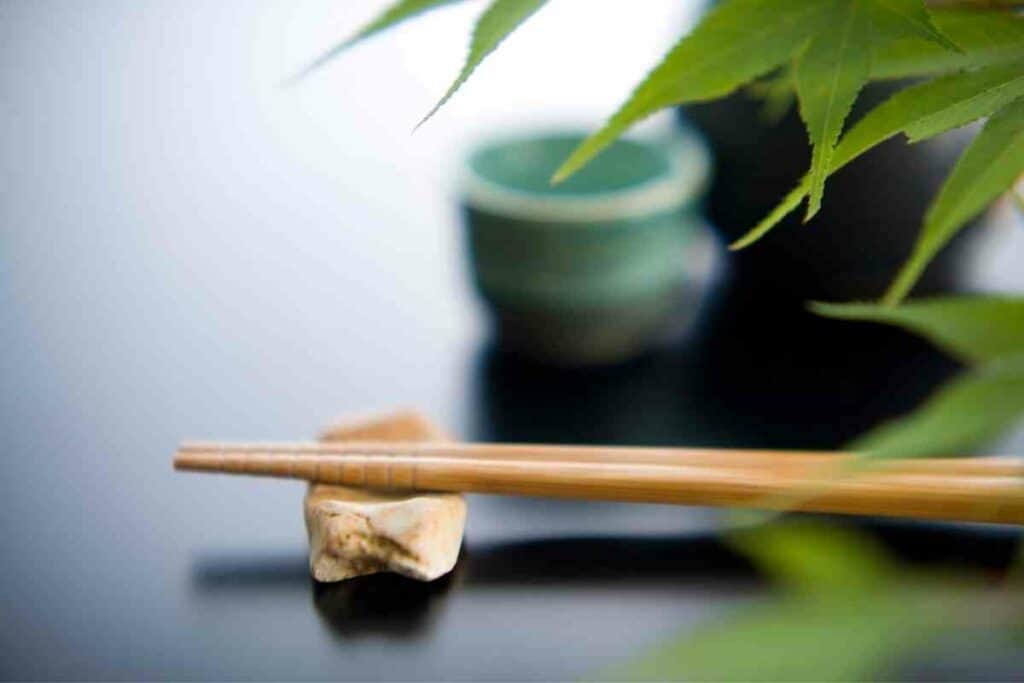
If no chopstick rest was provided on the table, then it is okay to place your chopsticks together beside your bowl or plate.
Just don’t cross them in an X.
The Don’ts
There’s going to be an awful lot of don’ts when it comes to using chopsticks.
The don’ts have been given the name kirai bashi, which loosely translates to:
- “displeasing chopsticks”
- or “forbidden chopsticks”
Most of the kirai bashi are to keep the chopstick holder from appearing rude, such as pointing with chopsticks or chewing on the tips.
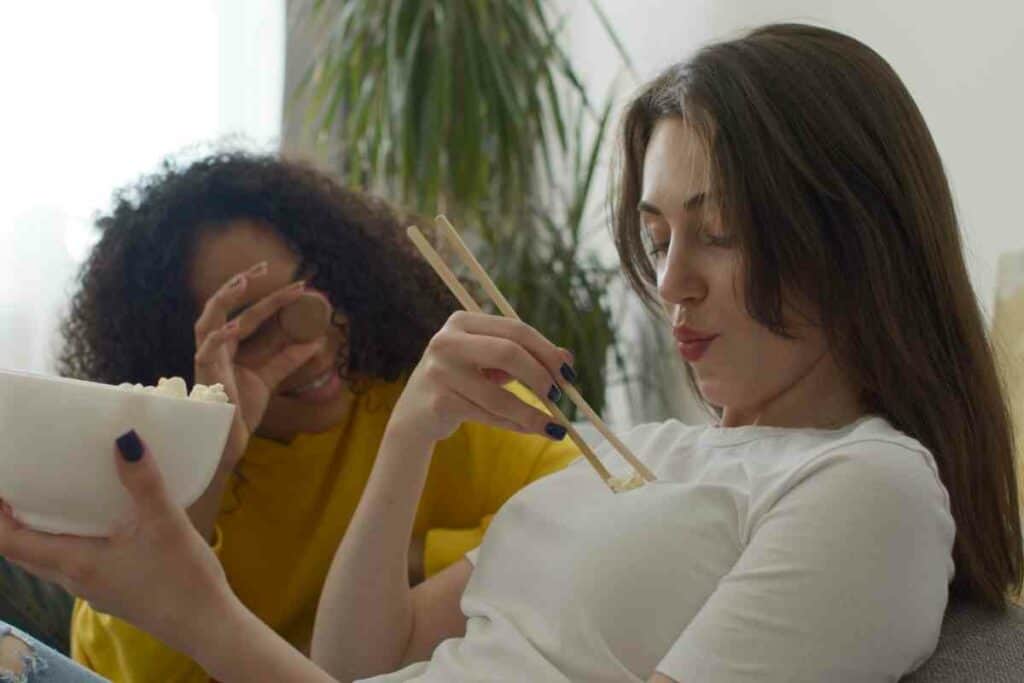
Other kirai bashi are set because the act is something that is done as a ritual involving the dead.
Leaving chopsticks vertically in a bowl of rice, for example, reminds people of funerals and is said to bring bad luck.
These are the thirty-nine kirai bashi in alphabetical order:
- Arai bashi: Washing food particles off your chopsticks in a bowl of soup or a beverage.
- Chigai bashi: Using chopsticks that don’t match in design or materials.
- Chigiri bashi: Shredding food by holding a chopstick in each hand and tearing the food apart.
- Furi bashi: Shaking sauce or soup broth off the tips of chopsticks.
- Furiage bashi: Pointing the tips of chopsticks towards the ceiling.
- Futari bashi: Reaching for the same food as someone else.
- Hane bashi: Removing pieces of food you don’t like from soups or dishes with chopsticks.
- Hidari bashi: Holding chopsticks in your left hand.
- Hiroi bashi: Passing food from your chopsticks to someone else’s chopsticks.
- Jika bashi: Using your personal chopsticks to grab food off a communal plate.
- Kaki bashi: Using your chopsticks to shovel food into your mouth from the edge of a dish.
- Kami bashi: Biting or chewing on chopsticks.
- Kara bashi: Using chopsticks to return food to your plate after already picking it up.
- Kasane bashi: Choosing to only eat one prepared dish when other dishes were prepared as well.
- Koji bashi: Using your chopsticks to move food around your plate or the communal plate until you find what you’d like to eat.
- Komi bashi: Using your chopsticks to put more food in your mouth when you are already chewing on more than enough.
- Kosuri bashi: Rubbing chopsticks together to remove splinters. This is a sign of disrespect and you are telling your host, restaurant, or supplier that you think their chopsticks are cheap.
- Kuwae bashi: Putting chopsticks in your mouth, either mindlessly, to clean them, or to hold them while moving things on the table.
- Mayoi bashi: Using your chopsticks to point at plates of food to decide which one you want to eat.
- Mochi bashi: Holding a bowl and chopsticks at the same time.
- Mogi bashi: Using your mouth to pick leftover food off your chopsticks.
- Namida bashi: Allowing soup to drip off the tips of your chopsticks.
- Neburi bashi: Licking your chopsticks.
- Nigiri bashi: Holding your chopsticks in a fist as though you would stab with a knife.
- Ogami bashi: Holding chopsticks horizontally with hands in the praying position.
- Otoshi bashi: Dropping your chopsticks on the floor while you are eating.
- Saguri bashi: Using your chopsticks to stir a dish to see what it is made of.
- Sakasha bashi: Using the wide ends of chopsticks to pick up food from a communal plate instead of using the communal chopsticks.
- Sashi bashi: Using your chopsticks to point at people or objects. Sashi bashi is also stabbing food with your chopsticks because it is “easier”.
- Seseri bashi: Using your chopstick like a toothpick to remove food stuck in your teeth.
- Soroe bashi: Using the table to line up the tips of your chopsticks.
- Sukashi bashi: Pushing past the bones of a fish to eat the other side instead of flipping the fish over once you are finished eating the first side.
- Tataki bashi: Tapping your chopsticks on the table or on plates to make noise.
- Tate bashi: Putting your chopsticks vertically in a bowl of rice. This is only to be done as an offering to the dead at a Buddhist funeral ceremony.
- Utsuri bashi: After you have moved the food to your plate, then moving it to a different plate.
- Watashi bashi: Laying your chopsticks beside each other over the top of a dish. This is a rude way of saying you do not wish to eat anymore.
- Yoko bashi: Holding two chopsticks side by side and scooping food up like a spoon.
- Yose bashi: Using your chopsticks to pull a dish closer to you.
- Zengoshi: Reaching across other plates with your chopsticks to grab food off a dish instead of bringing the dish closer to you.
Why Are There So Many Rules
Japanese culture puts a heavy focus on order, cleanliness, and tradition.
Chopstick etiquette was created as a blend of all of these values, but doing any of the kirai bashi related to tradition are the biggest no-nos.
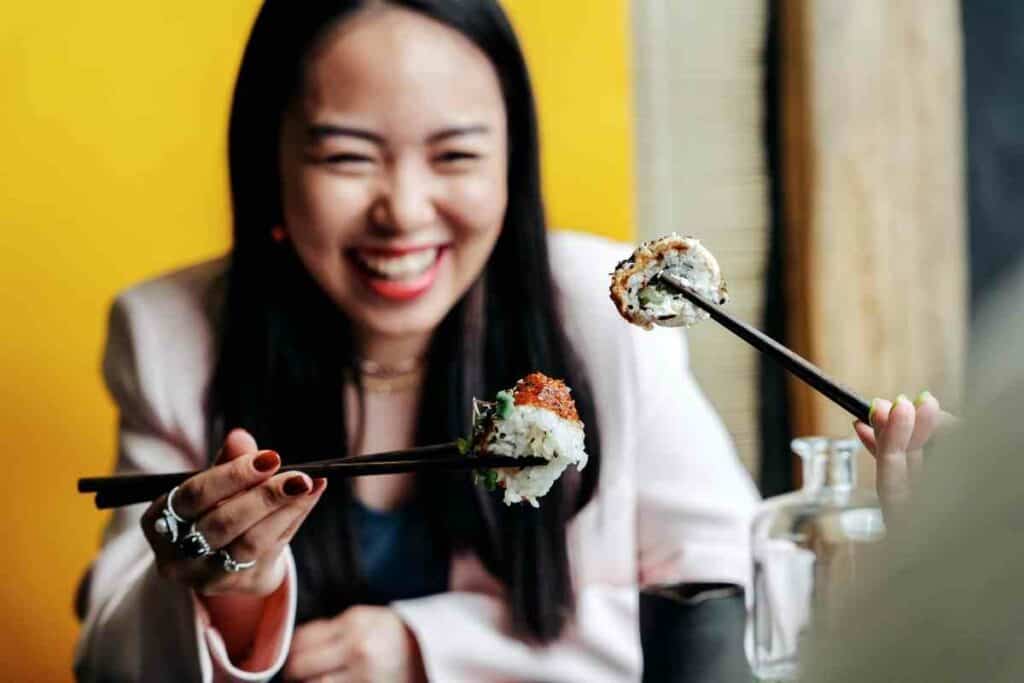
“Chopsticks” and “bridge” in Japanese are homophones of each other, both of which are common motifs in Japanese art.
It’s believed that in early Japanese history, the chopsticks were a way to bridge the mortal with the divine, and allow both to share a meal together.
When chopsticks were offered to a god, they would be able to use them to eat the food that was offered.
Final Thoughts
There are a few specific things to remember when using chopsticks in Japan.
For starters, always use the proper form and place your chopsticks correctly in the rest provided at the table.
Avoid the displeasing chopsticks behaviors, especially leaving the chopsticks vertically in a bowl and passing food from one set of chopsticks to another.
By following these simple etiquette rules, you’ll avoid any embarrassing faux pas and be able to fully enjoy the Japanese dining experience with ease.
Also Helpful
- Best Japanese Knives Top Picks for Every Kitchen
- Japan’s Bold New Trend: Dressing Like a British Gentleman (or at Least Trying)
- 7 Best Japanese Sunscreen Products You Can Buy Online
- 5 Best Japanese Makeup Brushes for a Flawless Finish
- 7 Benefits Of Tatami Mats You Should Know
- The Best Furoshiki Wrapping Cloths: Inspiration, Ideas & Cloths You Can Buy


